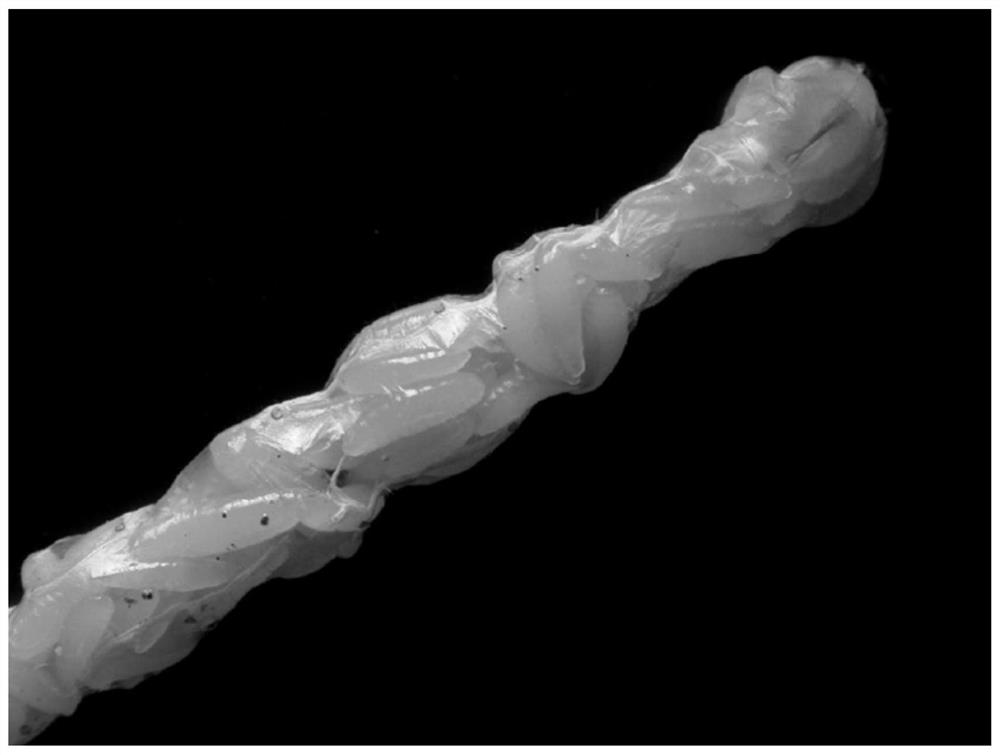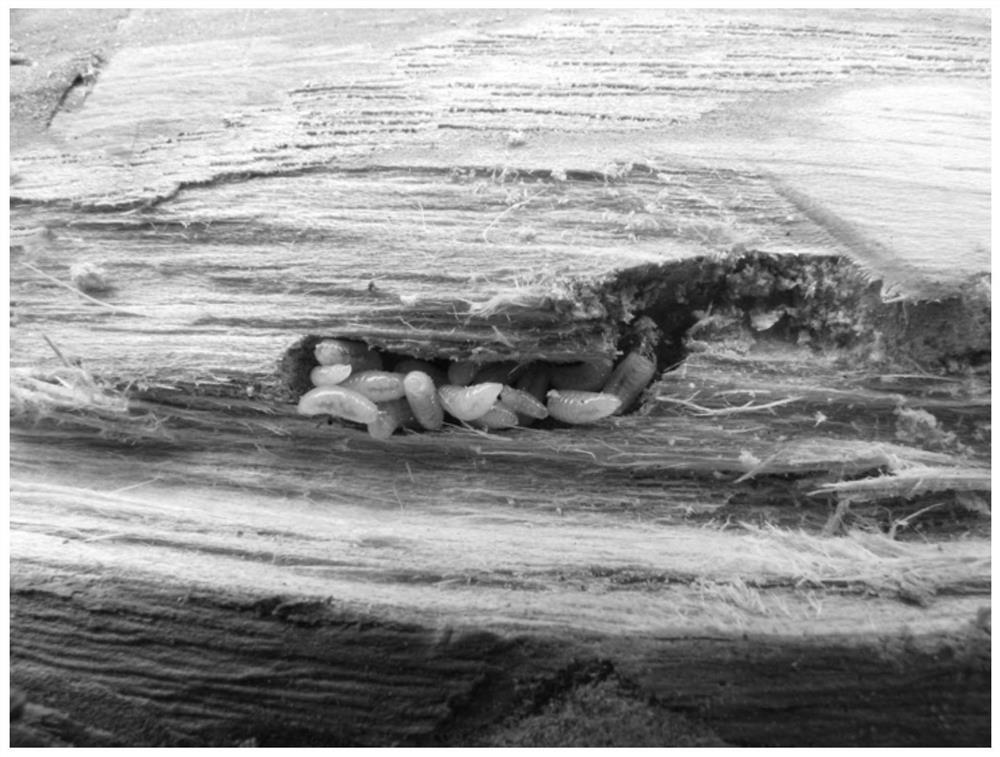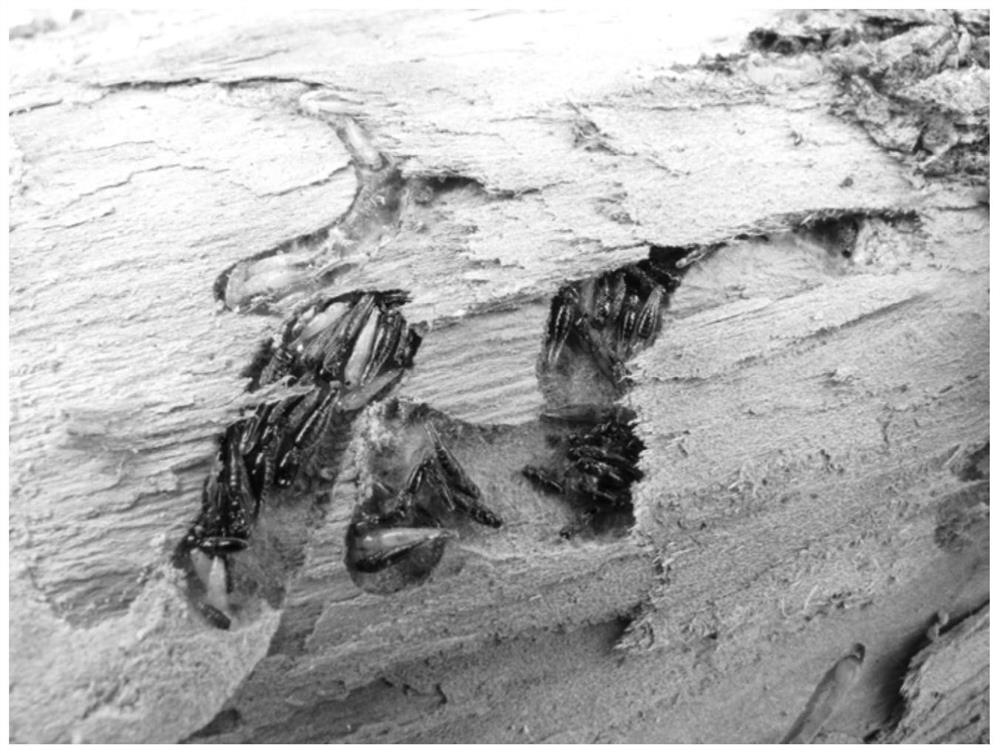An application of a small bee breeding method and the application in the narrowing Gillin
A technology of ash giddini and ash, which is applied in the fields of application, botanical equipment and methods, monitoring of invasive species, etc., and can solve the problems of limited sample collection, experimental research and pest control efficiency, and failure to achieve large-scale breeding of natural enemies.
- Summary
- Abstract
- Description
- Claims
- Application Information
AI Technical Summary
Problems solved by technology
Method used
Image
Examples
Embodiment 1
[0027] (1) Sample wood types and host insects: Sample wood and hosts are selected as: ocean ash-white wax narrowing Geidin larvae, cricket tree-narrow Gilling larvae, walnut tree-walnut tree-Xiaogi Ding insects, willow trees-light shoulder star cattle larvae larvae larvae , Peach Tree-Peach Red Neck Cattle Lidie, which is marked as processing 1-5 (other conditions remain unchanged);
[0028] (2) Parallel experimental settings, wash and dry the surface of the newly fell sample with water, and cut a small piece of bark on the flat and smooth parts of the different parts of the sample wood. After opening the bark, use a knife to make 1cm wide and deep The 3mm groove, put the healthy larva in the groove and cover it with the bark, and then use Parafilm to get tightly to get insect -like wood.
[0029] (3) Put the underworm -like wooden form vertically into the wet flower mud, cover it with an insectic tank, and apply a little honey on the side wall of the can. After that, open a pest ...
Embodiment 2
[0037] (1) Wash and dry the surface of the freshly fell on the surface of the aslene -like wood, and cut it in a relatively smooth and smooth place in different parts of the sample wood. Grooves, put healthy white wax narrowing Gilling 3-4-year-old larvae in the groove and cover the bark, and then use Parafilm to get tightly to get insect-like wood.
[0038] (2) Put the underworm -like wooden form vertically into the wet flower mud, cover it with an insectic tank, and apply a little honey on the side wall of the can. After that, open a pest of the worm tank, and put the healthy and matched white waxy Gilling bee and the bee bees carefully put it in the jar. The number ratio is 1 即 1, that is, 50 bees per treatment;
[0039] (3) Parallel experimental settings: Place the insects in the temperature of 20 ° C, 25 ° C, and 30 ° C (respectively referred to as treatment 1. Treatment 2 and processing 3), and the relative humidity of 60 %. After moving out the mother bee, the original band...
Embodiment 3
[0046] (1) Wash and dry the surface of the freshly fell on the surface of the aslene -like wood, and cut it in a relatively smooth and smooth place in different parts of the sample wood. Grooves, put healthy white wax narrowing Gilling 3-4-year-old larvae in the groove and cover the bark, and then use Parafilm to get tightly to get insect-like wood.
[0047] (2) Put the underworm -like wooden form vertically into the wet flower mud, cover it with an insectic tank, and apply a little honey on the side wall of the can. After that, open a pest of the worm tank, and put the healthy and matched white waxy Gilling bee and the bee bees carefully put it in the jar. The number ratio is 1 即 1, that is, 50 bees per treatment;
[0048] (3) According to the cultivation conditions determined by the previous test, place the insects in a lighting training box with a temperature of 30 ° C and a relative humidity of 60 %. After a week, the mother bee is removed. In the cultivation box, regularly ob...
PUM
 Login to View More
Login to View More Abstract
Description
Claims
Application Information
 Login to View More
Login to View More - R&D
- Intellectual Property
- Life Sciences
- Materials
- Tech Scout
- Unparalleled Data Quality
- Higher Quality Content
- 60% Fewer Hallucinations
Browse by: Latest US Patents, China's latest patents, Technical Efficacy Thesaurus, Application Domain, Technology Topic, Popular Technical Reports.
© 2025 PatSnap. All rights reserved.Legal|Privacy policy|Modern Slavery Act Transparency Statement|Sitemap|About US| Contact US: help@patsnap.com



